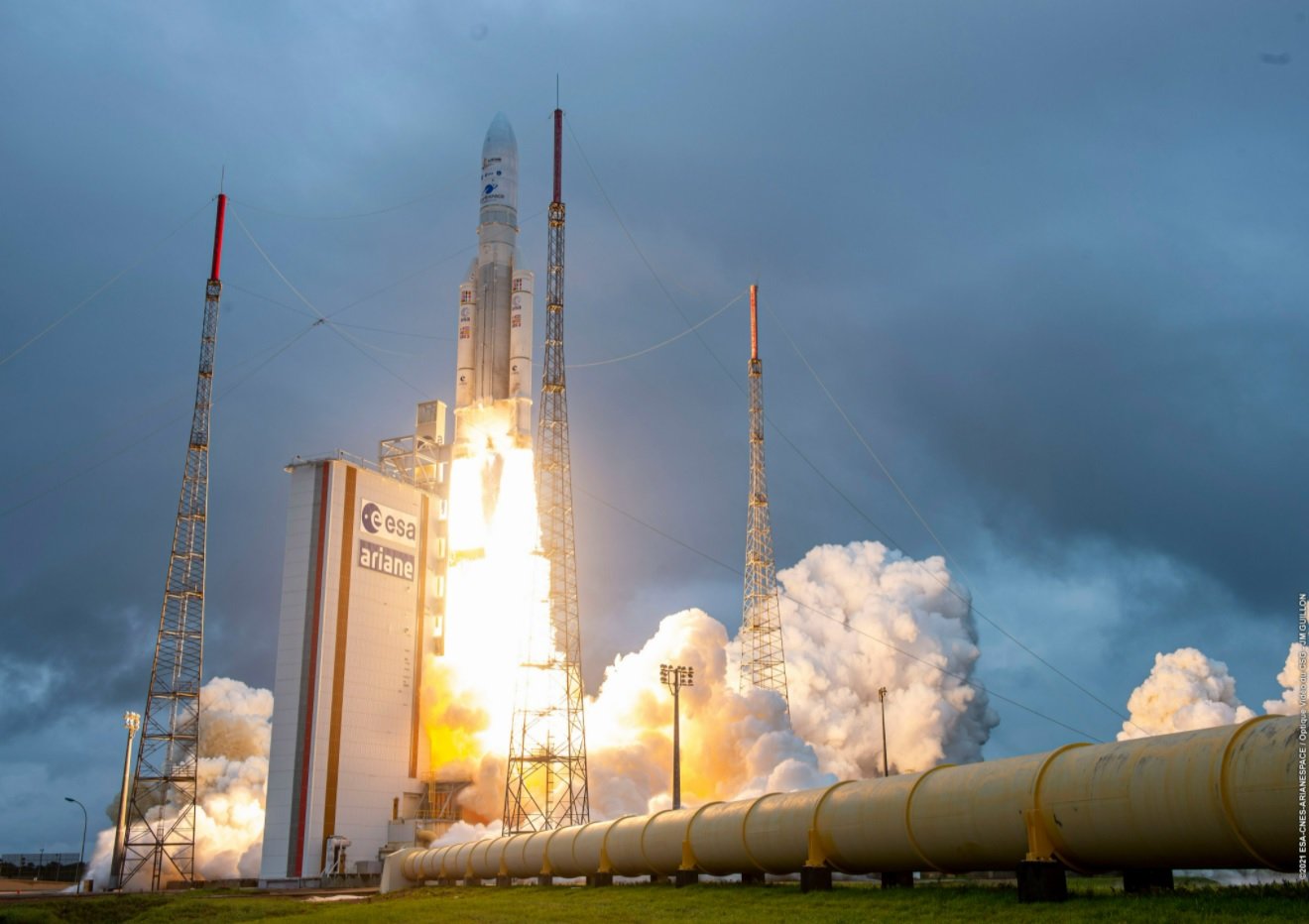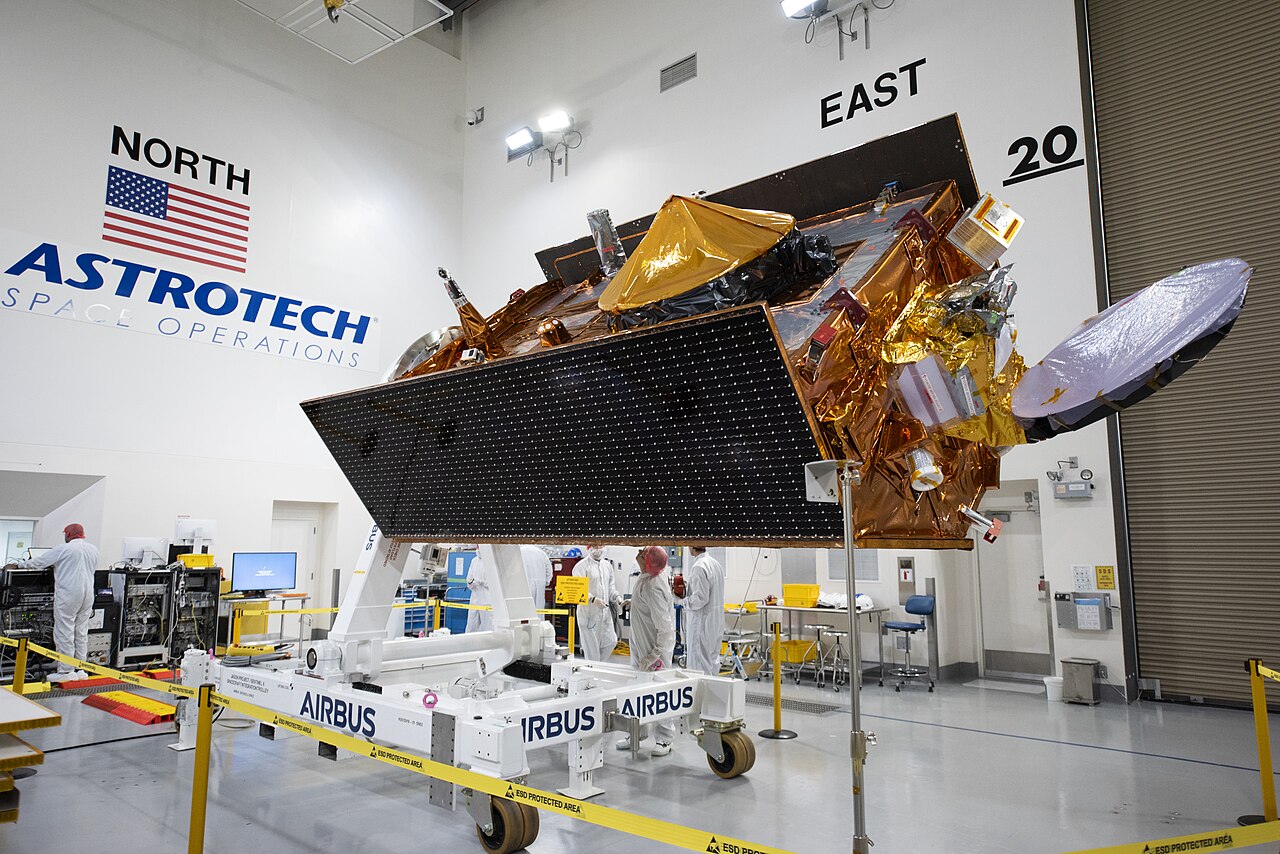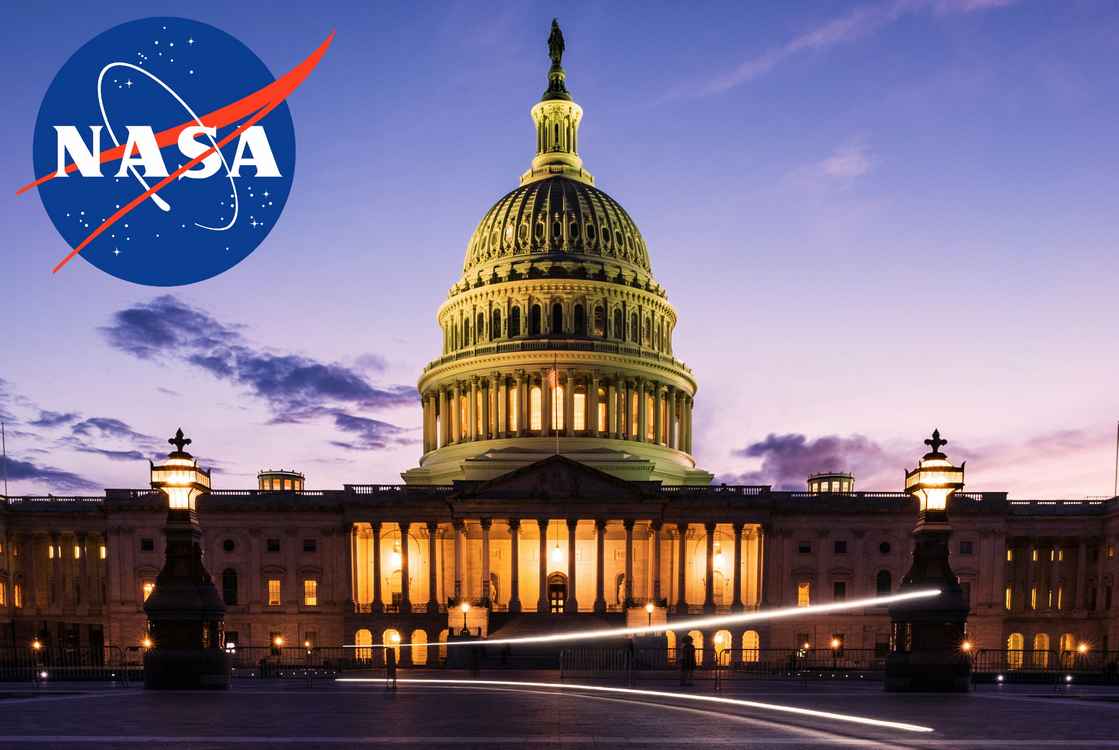PICTURED: Ariane 5 with the James Webb Space Telescope launches from ELA-3 in French Guiana. PC: ESA.
Story at a glance…
-
The most powerful space telescope ever successfully completed its Christmas morning launch.
-
Despite its construction phase being riddled with failures, the launch went off without a hitch.
-
5 days into travel, the telescope’s solar shield is almost deployed, and next week the mirrors will fold into place.
After literally decades of dreaming, work, and the more often highlighted—setbacks, the James Webb Space Telescope is finally where it belongs: floating in space.
For a priceless work of technological innovation, it has had its fair share of cost overruns, scandals, delays, malfunctions, and more, even unto its final days on earth, when problems continued to push back the launch date after it had arrived in the spaceport in French Guiana.
However the Arianespace Ariane 5 rocket did its job of carrying the massive telescope to outer space. Off the ground at 7:20 EST on Christmas morning, Webb separated from the rocket 27 minutes later, deployed its huge solar arrays, which operators confirmed were providing the station with power, and began sending telemetry data.
This is all the more remarkable when, paired with its spotty history, one reads what Webb lead mission systems engineer Mike Menzel said at a November 2nd news conference about how there are 344 ways Webb can go wrong, and that 80% of them are during takeoff and separation.
Webb has 144 release mechanisms “which all must work perfectly,” Krystal Puga, Webb spacecraft systems engineer for Northrop Grumman, which built the spacecraft, said during the briefing. That’s a lot, considering one NASA review in 2018 found literally 70 loose screws in the telescope.
All that can be more or less forgotten now, as the observatory floats towards its orbit at the 2nd Lagrange Point at around 1 million miles from Earth.
“The James Webb Space Telescope represents the ambition that NASA and our partners maintain to propel us forward into the future,” said NASA Administrator Bill Nelson. “The promise of Webb is not what we know we will discover; it’s what we don’t yet understand or can’t yet fathom about our universe. I can’t wait to see what it uncovers!”
It’s truly one of the most monumental projects completed in this period of space history, and many YouTube channels dedicated to space and science have 24-hour Webb tracking streams.
Webb carries four ridiculously advanced observation tools, all of which are for detecting infrared light. While this wavelength doesn’t immediately deliver beautiful images in the way the Hubble Space Telescope does, from a scientific research standpoint it was the obvious and only choice for a project of this scale.
All systems (so far) go
After completing two scheduled mid-course corrections, mission control discovered there was significantly more leftover propellant than they had imagined, potentially extending the mission lifespan of Webb beyond a decade by several years. Webb has propellant onboard to make small corrections in its orbit around the second Lagrange point, a far-off yet constant orbit around the Earth.
Once at “L2” as it’s called, propellent will be needed into the 21st century to correct orbital decay and other factors that could push the spacecraft off course.
Webb is currently undergoing a multiple-day, human-controlled deployment of the structural component of its sunshield, a large protective barrier that will allow it to stay cool and avoid glare and other optical impediments to its observations. It will take six days for the onboard motors to extend all the pallet and ballast structures which give the solar shield its stability.
On the 29th, the tower assembly was activated to raise and effectively separate the observatory-portion above from the sun shield below, which will allow room for the shield membrane to deploy.
As of yet there have been no reported problems.
Mysteries in red
“In the early universe, the starlight from galaxies, because of the expansion of the universe, gets stretched to longer wavelengths,” Sarah Kendrew, an engineer and astronomer with the European Space Agency, who worked on the design team for one of the four infrared instruments, told WaL.
“So if we want to see that same light from a galaxy in the early universe, it gets pushed into the infrared because the universe is expanding at such high speed: that’s what we call ‘red-shift’”.
“And so because Hubble can only look a little bit into the infrared, it kind of has reached the limit in distance to what it can really see, and if we want to probe even further to even earlier times in the early universe we need a telescope that can look more into the infrared,” she explained.
It’s not only about obsessing over the birth of the universe, but the infrared observation is designed to capture information on other objects too, particularly exoplanets, and smaller bodies like asteroids and comets.
The next step is to wait an agonizing 6 months while the observatory does a systems check, or “commissioning,” before the first series of images arrive. Unlike Hubble, Webb will likely never be touched or fiddled with again by human hands, and so whatever equipment it has is the only kind it will ever have. If there’s a problem that can’t be solved through telecommunications, it will never be solved.
But if all systems are go, it will represent a watershed moment between scientific study in the previous era and an altogether new one.




